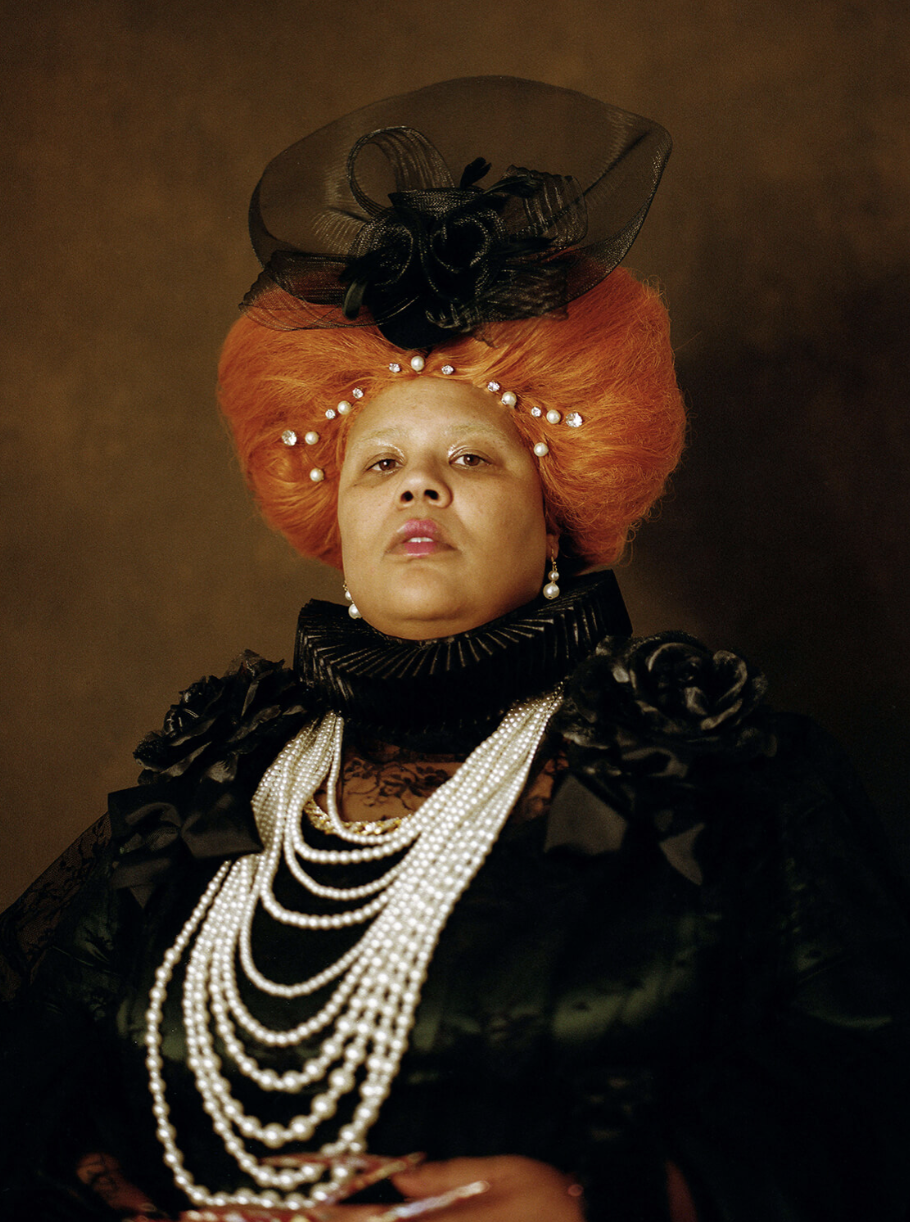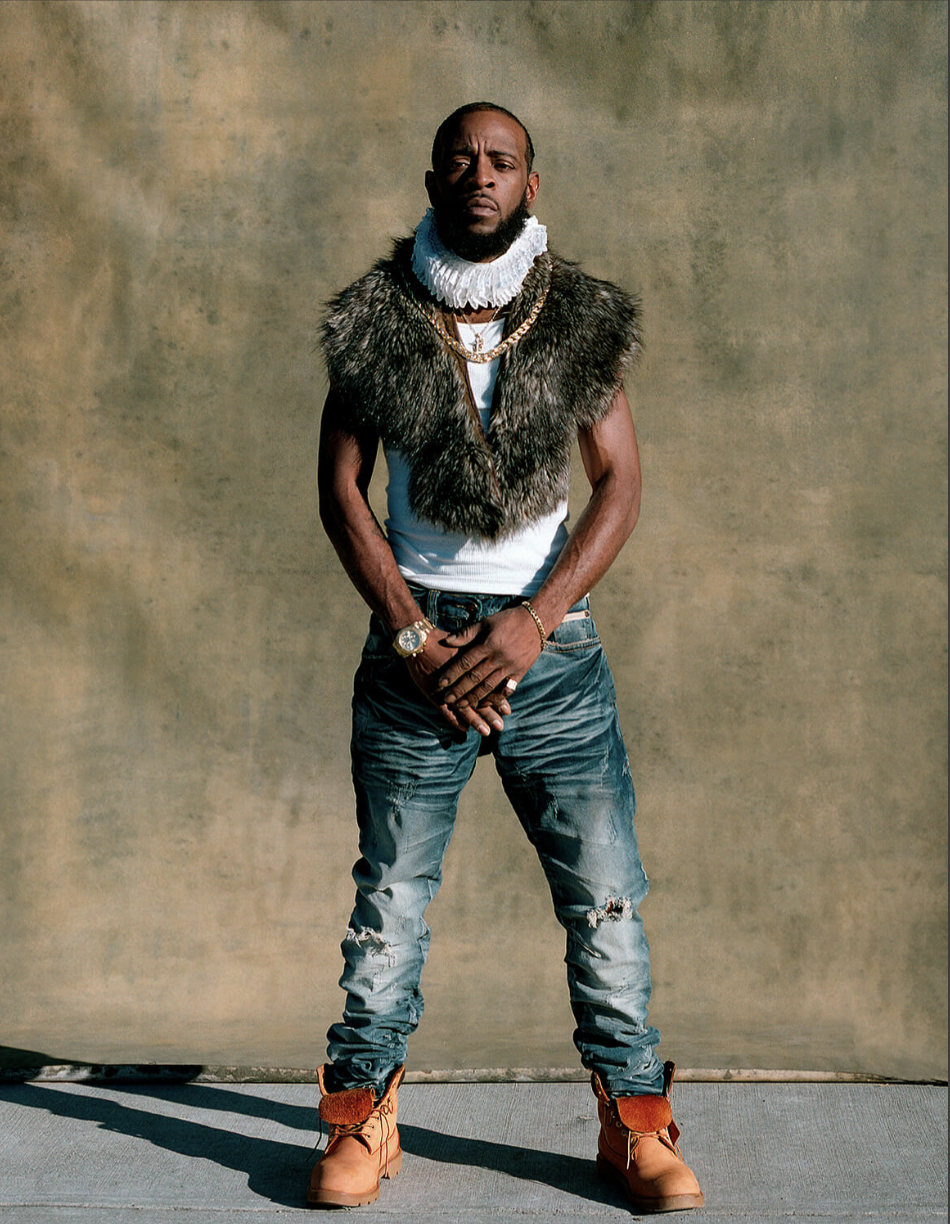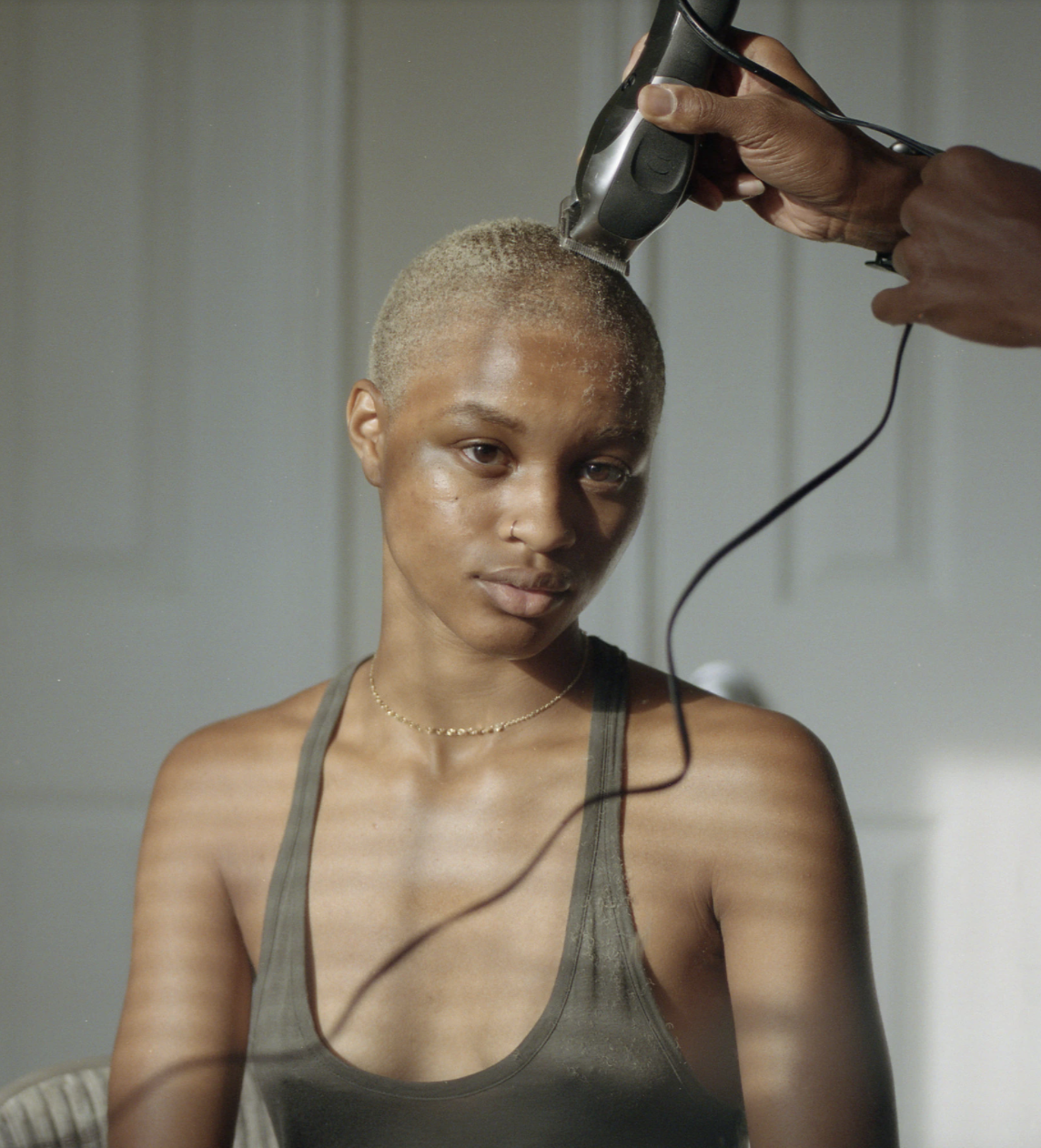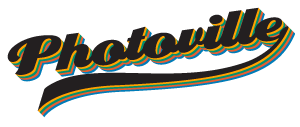Interview: Kennedi Carter’s Imagery Expands Concepts of Perception and Representation

In October, our Communications Manager, Sydney Edwards, sat down (virtually) with photographer, Kennedi Carter to discuss her Photoville Festival and Photoville FENCE exhibitions, the importance of representation, and what she hopes people take away from her photography.
Q: To start off, I’d love to talk about your Photoville FENCE series, Flex. What inspired you to start the project?
It started when I came across one of Titus Kaphar’s paintings. He created these abstract old master portraits that talk about black space and the lack of blackness in those spaces.
So after seeing that and taking a few art history courses I came to realize that in the Elizabethan time period there weren’t many examples of black people in that style of portraiture either. And I thought it’d be interesting to make some type of photographic theories that touched on that.
Q: As I was looking at Flex in Brooklyn Bridge Park one image that really stood out to me was the man with the fur collar and the Tims [Timberland Boots] on.
Mhmm! I thought it would be interesting to give it this contemporary outdoor, outside, everyday black life element. I think a lot of art these days tries to figure out how to be in conversation with whiteness rather than reflecting and figuring out how to amend and think about history. And with that image, I just wanted to figure out how to include the nuances of the Elizabethan time period, but also incorporate something that reflects the now of black experiences and aesthetics. Thinking about how history has truly affected how we present ourselves to the world and what it means to look good and feel good.
I think that’s why I chose the Elizabethan time period in particular. It’s one of those periods where you could literally, in regards to imagery, track down how people wanted to be perceived in the world and how people wanted to control their own narratives. They want it to look rich and they want it to look important and I think oftentimes we see this in the hood too, this idea of needing to be hood rich. And so I thought it’d be interesting to kind of think about that in conjunction with historical patterns.

Q: Yeah, that definitely still seems true today. No matter what we’re all wearing, we’re trying to portray something. What was the process of you picking out the clothing for the series?
The curator at CAM Raleigh, who also helped me find the means to make Flex, found a lot of the clothing items. We were making pulls from people that collected vintage items. We even got some off of Amazon.
In the image with Chris and his Tims, he showed up with them on his own. I basically told him the idea of what I wanted him to wear and he just showed up with it. Chris wanted to make sure that he had just gotten his hair braided. And it was, it was a good time.
Q: You’re very much in the Photoville ecosystem this year, being part of the Photoville Festival with Authority Collective’s Lit List and the New York Times’ Sources of Self Regard and with the Photoville FENCE as our Juror’s Choice featured artist.
Taking a moment to speak specifically about The FENCE and Flex what do you want to make sure people take away from the series?
I want people to reflect on how they would like to be perceived in the world, what it means to truly control your own narrative, and what it feels and looks like to be seen. I think that’s what I would love to come from the project.
Q: I think that perfectly lends itself to your New York Times’ Sources of Self-Regard self-portrait at the Photoville Festival. What was important for you to portray in that image?
I took the photo in my parents’ bathroom. My dad was cutting my hair during the quarantine. I think something that’s interesting about that image, the idea that femininity has many faces and it’s not a monolith. There’s this juxtaposition between getting my hair cut by my father and the idea of womanhood that we’ve been spoonfed for a while.
And I think it’s just part of controlling my own narrative, that self-portrait gave me a space to be able to do that on my own.

Q: What’s next for you? Are you working on anything or just taking a moment to enjoy the fruits of your labor?
I have something coming out in early November. I can’t talk too much about it but I’m excited and I put a lot of work into it. And that’s all I can really say. You’ll know it when you see it!
(Kennedi was foreshadowing to the moment when we all would discover she photographed Beyoncé for the cover of British Vogue, becoming the youngest artist to do so!).
Kennedi Carter’s series Flex was selected as the Juror’ Choice for the 9th Edition of the Photoville FENCE, traveling to 11 cities across North America. Additionally, Kennedi was selected to be apart of Authority Collective’s Lit List exhibition as well as The New York Time’s exhibition, The Sources of Self-Regard. Both are on view in DUMBO, Brooklyn, as part of the Photoville Festival until November 29.


